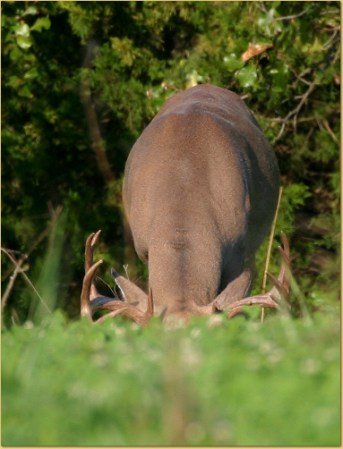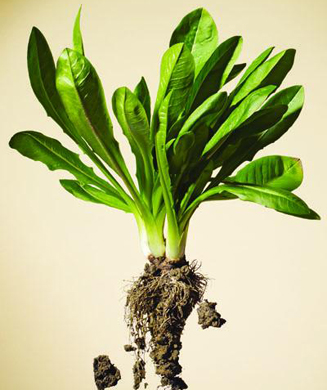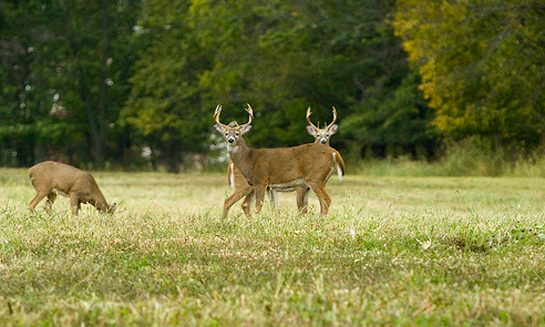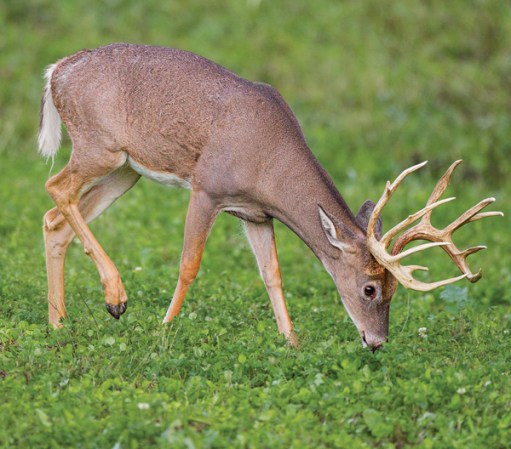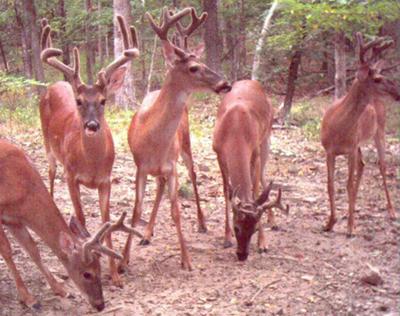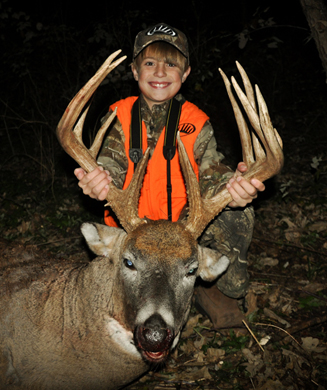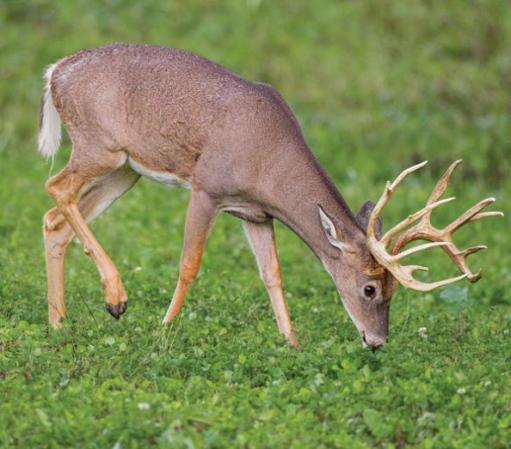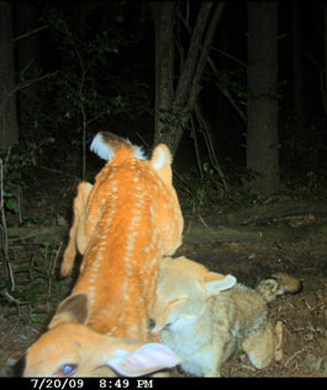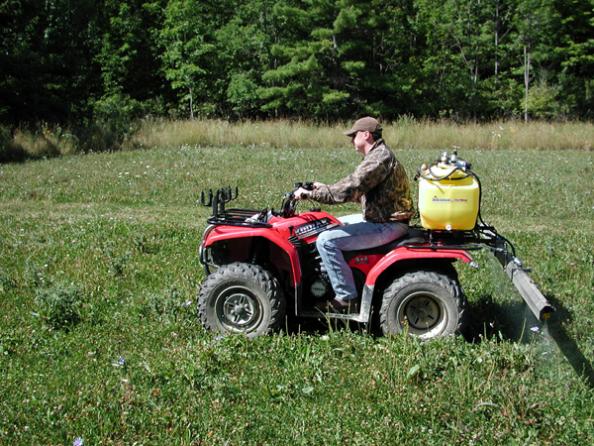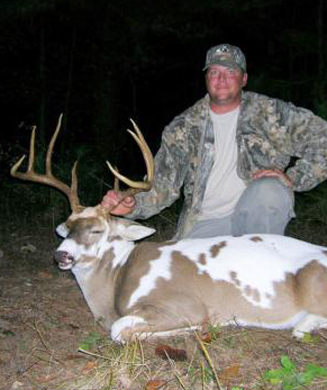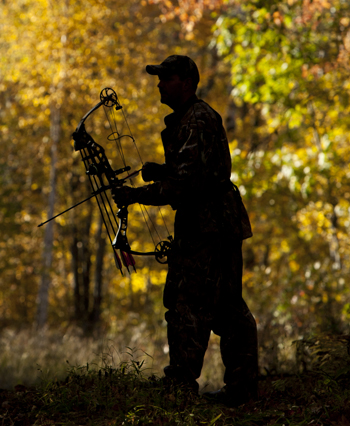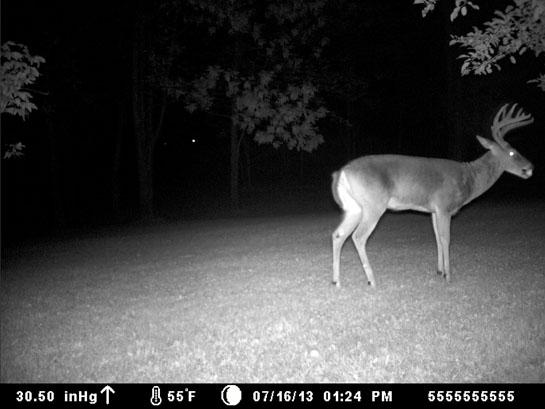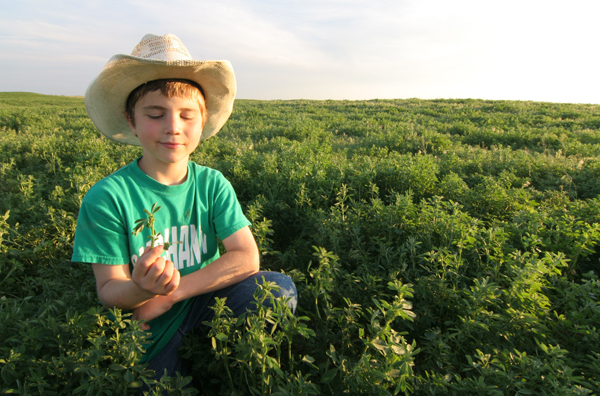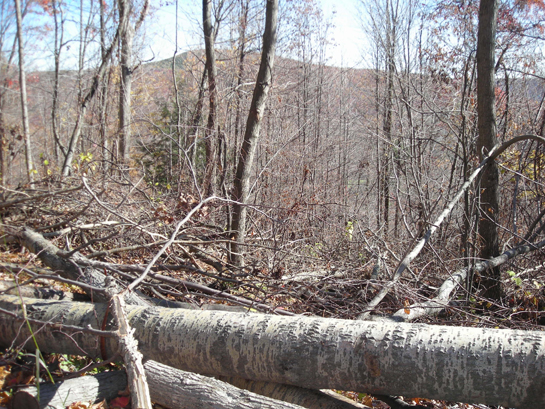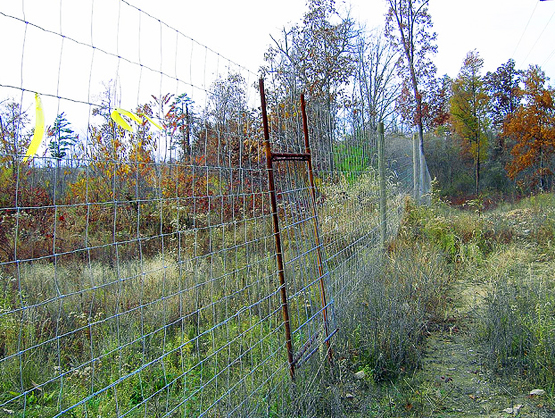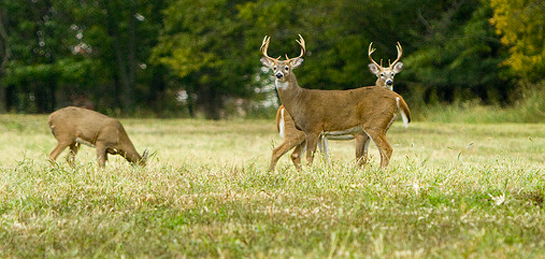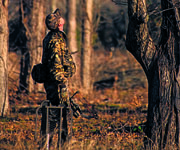A basic food plot will provide valuable nutrition to deer and add important biodiversity to most woodland landscapes. But, there is a big difference between a basic food plot and what can really be done with a food plot if you set your standards high and know what you are looking for. Here are a few things to think about when building your next plot.
Basic food plots provide deer with 1-2 tons of green matter per year. You plant them with anything that will grow and forget about them until hunting season.
Advanced food plots provide deer with 3-5 tons of highly nutritious, easy to digest nutrition per year. They are planted with scientifically developed, food plot blends designed for deer not cattle. The plots are planted on well-prepared seed beds, they are limed when necessary, and are given a generous shot of fertilizer in spring and late summer. They are also sprayed with grass specific herbicides during the growing season and mowed to keep broad leaf weeds down.
Basic food plots feed and attract deer but at all the wrong times and at all the wrong places. Deer use them but mostly at night. They are boring to look at and you hardly ever see, let alone harvest, a mature deer on a basic food plot during hunting hours.
Advanced food plots are made with hunting in mind, especially bowhunting. They are never placed close to a neighbor’s boundary and are never visible from a road. Treestand sites (at least 2 per plot) are always located before the plot is put in. It is a whole lot easier to plant a plot on the upwind side of a cluster of 60-foot pines than it is to move the pines. Advanced plots are irregularly shaped (hourglass, boomerang, etc.) and designed to get a whitetail within a hunter’s effective range. Brush is piled downwind from stands to discourage deer from approaching the plot with a nose full of hunter. Licking branches (pipe in the ground with a hanging sapling) are set up in front of stands to stop deer in strategic locations. Also, you can get in and out of advanced food plots without spooking all the deer in the neighborhood.
Advanced food plots are strategically located across a property with an eye toward deer movement, wind current and terrain. They encourage bucks to walk from plot to plot in search of feeding does and provide hunters with numerous opportunities to intercept bucks on the move. These plots make use of natural terrain and wind currents to help direct deer to an exact spot where a hunter can take them. Advanced plots work well in certain winds and don’t work well in other winds. Advanced hunters know which plots to hunt, and under what conditions they should hunt them in. Basic plots are planted with one or two plant varieties, which hopefully will grow reasonably well through most of the year and hopefully most of the hunting season.
Advanced plots are comprised of blends of 7-10 plants and each complements the others. They grow well together and compensate for each other’s strengths and weaknesses and are always attractive during hunting season. Advanced plots are also planted “around the compass” in order to provide high quality nutrition during all times of year. Advanced hunters know that north-facing slopes are cooler and wetter than south slopes and plants thrive in each location at different times of year. Vegetation stops growing weeks earlier on a steep north slope (summer plot) than it does on a south-west slope. (Late season tip: hunt south sloping plots that are planted with late season growers like winter rye or brassicas).
Advanced plots are designed to be either feeding plots or hunting plots. Feeding plots are laid out in relatively large (1-3 acres) efficient squares or rectangles. They are easy to run farm equipment on and are designed to be feeding destinations. You seldom can kill a deer with a bow on a feeding plot and they are best left un-hunted.
Hunting plots are smaller (1/8-1 acre) and are irregularly shaped. They are designed to intercept deer headed to a larger feeding location and offer hunters a shooting opportunity. Deer come in an out of small hunting plots on a regular basis. As often as not, they have moved on to feeding plots by nightfall, which allows advanced bowhunters to get in and out of the woods undetected. Advanced hunters plant both feeding and hunting plots.
It should be clear by now that there is more to this food plot thing than what meets the eye. A good food plot program can turn a “B” property into an “A” and is an absolute joy to behold. It requires a basic understanding of agricultural practice and a whole lot of understanding of what deer do and why. Advanced food plots should be viewed in the context of both feeding deer and hunting deer. They work best when incorporated in a total habitat management program, which concentrates on managing food cover and security. In the world of deer, each compliments the other.
Advanced food plots should become a central part of your hunting strategy. Advanced food plots feed deer all (or almost all) season long and contribute to the health of the herd. Advanced food plots affect deer movement and deer behavior and will generally improve your whitetail hunting enjoyment. And if that’s not enough, think about the inner satisfaction you get from doing something good for the land and the wildlife that use it.

